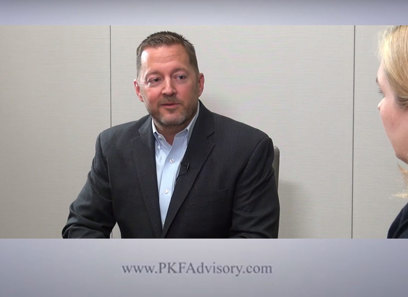M&A Outlook: Why Economic Factors Are Crucial for Understanding Mergers and Acquisitions
M&A Outlook: Why Economic Factors Are Crucial for Understanding Mergers and Acquisitions
Blog Article
The Effect of Mergers and Acquisitions on Market Characteristics and Competitors
The landscape of purchases and mergers offers an intricate interaction between promoting development and potentially weakening affordable integrity within markets. As business seek strategic positionings to improve performance and development, the implications on consumer choice and market prices warrant mindful scrutiny. While the benefits of such loan consolidations can be evident, the darker ramifications commonly arise, elevating crucial concerns regarding market power and the governing structures designed to maintain equilibrium. This conversation welcomes an expedition of the subtleties entailed, disclosing how these corporate maneuvers reshape the very foundations of competition.
Overview of Mergers and Acquisitions
Mergers and procurements (M&A) play a crucial duty fit the landscape of contemporary company, as companies look for to boost their one-upmanship and achieve strategic purposes. M&A deals include the combination of companies or assets via different financial deals, consisting of mergings, where 2 companies combine to form a new entity, and acquisitions, where one firm purchases another outright. These tasks are driven by a myriad of elements, such as the pursuit of harmonies, diversification of item offerings, and the wish to enter brand-new markets.
The M&A process typically entails a number of phases, including calculated preparation, due diligence, arrangement, and combination (Emerging Market Opportunities). Firms conduct comprehensive evaluations to determine possible targets that straighten with their development strategies and analyze the functional and monetary effects of a deal. Governing considerations additionally play an important role, as antitrust legislations are made to avoid monopolistic techniques that could hurt competitors
As organizations browse the intricacies of M&A, the outcomes can dramatically impact stakeholders, including staff members, shareholders, and clients. Comprehending the characteristics of M&A is crucial for evaluating their implications within the wider context of market habits and affordable placing.
Favorable Impacts on Market Characteristics
The consolidation of companies through purchases and mergers can result in considerable positive impacts on market dynamics. One of the primary benefits is the enhancement of functional performances. By incorporating sources, companies can enhance procedures, minimize redundancies, and accomplish economic climates of scale, ultimately lowering costs and boosting earnings. This effectiveness can translate into reduced rates for customers, cultivating a much more competitive market environment.

In addition, raised market share arising from mergers can give companies with higher bargaining power with suppliers and vendors, assisting in boosted terms that can profit the total supply chain.
Unfavorable Consequences for Competition

Furthermore, the removal of competitors with purchases can stifle development. When principals merge, smaller firms might battle to complete, causing a homogenization of services and products. The resultant absence of competitors can produce an atmosphere where staying companies have less motivation to buy research study and advancement.
Additionally, mergers can develop obstacles to entrance for new companies, as the joined entity may leverage its boosted sources to dominate the marketplace. This can hinder prospective entrants, thereby restricting competition that site and innovation in the long-term.
Eventually, while procurements and mergers can supply critical advantages, their potential to threaten competition demands cautious consideration of their more comprehensive ramifications on the market characteristics. The balance in between growth and affordable stability continues to be an important issue in evaluating such business strategies.
Governing Considerations and Oversight
Governing frameworks play a critical function fit the landscape of mergers and procurements, ensuring that market characteristics remain competitive and reasonable. These frameworks are made to avoid anti-competitive actions and to protect customer interests. Regulative bodies, such as the Federal Profession Commission (FTC) in the United States and the European Payment in the EU, evaluate suggested purchases and mergings based upon their prospective influence on competitors within the market.
The evaluation procedure entails an extensive examination of the marketplace share, potential for monopolistic methods, and the general financial implications of the transaction. Regulatory authorities usually impose conditions or require divestitures to mitigate worries over lowered competitors, ensuring that the merged entity does not dominate the marketplace unjustly.
This joint technique assists to promote a balanced governing setting that advertises development while protecting affordable techniques. great post to read Eventually, effective regulatory factors to consider are necessary in preserving market integrity and motivating healthy competition in the face of advancing service landscapes.
Study and Real-World Instances
Frequently, helpful hints case researches of noteworthy mergings and purchases illustrate the extensive impacts these transactions can carry market dynamics. The 2000 merging between AOL and Time Detector works as an archetype, where the prepared for synergies dropped short, resulting in a radical decline in shareholder worth. This case highlights how social misalignments and overestimation of market possibility can interrupt competitors.
In contrast, the procurement of WhatsApp by Facebook in 2014 exemplifies an effective combination that improved the communication landscape. Emerging Market Opportunities. Facebook leveraged WhatsApp's individual base to enhance its service offerings, properly enhancing its market prominence while maintaining competitors in the messaging sector
One more substantial case is the merging of Exxon and Mobil in 1999, which developed one of the world's biggest oil companies. This loan consolidation led to higher performances however increased concerns about minimized competition in the energy market, triggering governing scrutiny.
These instances highlight the intricate interaction in between procurements and mergings and market characteristics, showcasing both the possible advantages and challenges that can emerge, inevitably forming affordable landscapes throughout markets.
Verdict
Mergers and procurements play a critical role in forming market dynamics and competition. Efficient regulatory oversight is essential to make sure that the benefits of M&A tasks are optimized while reducing adverse effects on market competitors.
One major concern is the capacity for reduced market competitors, as mergers commonly lead to the combination of market power amongst fewer gamers. Regulatory bodies, such as the Federal Profession Commission (FTC) in the United States and the European Payment in the EU, assess recommended acquisitions and mergers based on their possible impact on competitors within the market.

Mergers and procurements play a crucial role in forming market dynamics and competition. Reliable regulatory oversight is necessary to ensure that the advantages of M&An activities are optimized while reducing negative impacts on market competitors.
Report this page